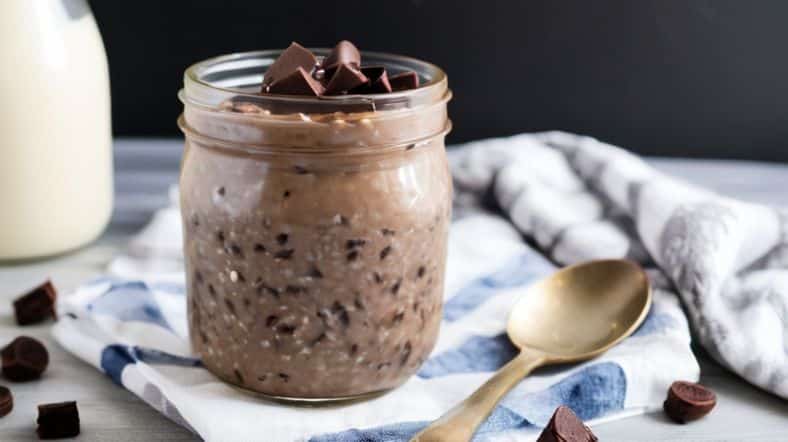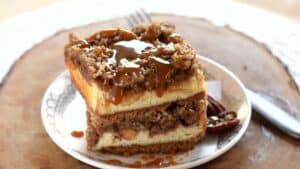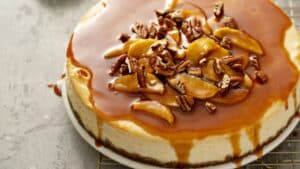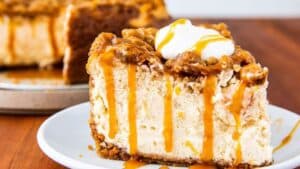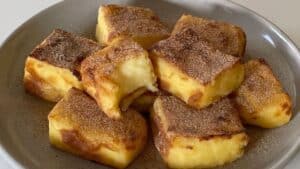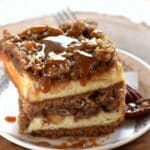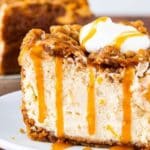Let’s get one thing clear—brownie batter overnight oats are not a TikTok trend that’ll vanish by Q3. They’re a legit, functional, flavor-packed breakfast solution that’s earning a permanent spot on the menus of cafes, fitness-focused meal prep brands, and upscale brunch joints. Yeah, it’s oats and it’s chocolate—but it’s not just a dessert disguise. This is a nutritional powerhouse in a jar. And when done right? It’s a culinary mic drop.
In this piece, I’m not just giving you another Instagrammable oats recipe. We’re diving deep. What makes brownie batter overnight oats a rising star in professional kitchens? How do you get the texture just right? What are the science-backed perks behind its ingredients? Let’s break it all down like you’re developing a product for Whole Foods, not just meal prepping on a Sunday night.
Why This Isn’t Just Breakfast Dessert
First off, the name is misleading. “Brownie batter” sounds indulgent, and that’s on purpose—it should. But the core of this dish is oats, plant-based proteins, healthy fats, and low-GI sweeteners. It hits the sweet spot between performance nutrition and comfort food. And that’s rare.
From a menu development perspective, brownie batter overnight oats hit several consumer sweet spots:
- High-protein (up to 20g+ per serving depending on additions).
- Naturally gluten-free and easily veganized.
- Great macros for active or wellness-oriented demographics.
- Can be batch-prepped at scale—hello labor efficiency.
- Zero cooking required. Fridge does all the heavy lifting.
It’s a dream for operational workflow in breakfast and brunch kitchens. No burners. No ovens. No open flames. Just containers, scales, and quality control.
What’s Actually in It? Not Just Oats and Cocoa
Let’s look at the typical base formula. And then we’ll talk optimization, because frankly, most recipes out there don’t cut it for pros.
Core Ingredients:
- Rolled oats or quick oats (steel-cut? don’t even think about it unless par-cooked)
- Unsweetened cocoa powder or Dutch-processed cacao (big difference, we’ll get to that)
- Nut milk or dairy milk (oat milk if you’re doubling down on the oats)
- Chia seeds (yes, they matter more than people think)
- Greek yogurt or plant-based yogurt (texture, protein, tang)
- Maple syrup, agave, or zero-GI sweeteners like allulose
- Optional protein powder (whey, pea, or even collagen)
Now, you can’t just chuck all that in a jar and call it a day. Pro kitchens are fine-tuning ratios to deliver one very specific thing: that spoonful where you can’t tell if it’s oats or just melted brownie. Texture and flavor balance are everything.
Texture Engineering 101
Most amateur versions flop right here. They’re gloopy, too thick, or weirdly separated. That’s because overnight oats aren’t just about hydration—they’re about controlled starch gelatinization and suspension of particulates. In other words: don’t wing it.
If you’re serving this in a café setting, consistency is key. The ideal base ratio?
- ½ cup oats
- 1 tbsp chia
- ¾ cup liquid
- ¼ cup yogurt
- 2 tbsp cocoa
Adjust from there. The chia seeds absorb a surprising amount of moisture and give that pudding-like hold. Skip ‘em and you’re in soup territory.
Now about the cocoa—natural cocoa is more acidic and sharp, whereas Dutch-processed is smoother and darker. If your oats lean sweet, Dutch is gold. But if you want brightness and edge, natural cocoa wins.
Also: if you’re using plant-based protein powders, beware—they can mess up the mouthfeel big time. Test for grittiness. Try different brands. Pea protein especially can turn your oats into drywall if you overdo it.
Flavor Layering That Actually Works
Brownie batter as a concept relies on deep, almost fudge-like flavor. That means layering chocolate notes. One-dimensional cocoa won’t cut it.
Here’s what professionals are doing to elevate the profile:
- Espresso powder – just a pinch makes chocolate pop. This is not optional.
- Sea salt – balances sweetness and lifts flavor. Maldon flakes on top? Yes please.
- Vanilla extract – rounds it out. Use real vanilla, not that weird clear stuff.
- Nut butter – swirl in almond or cashew butter for depth and fat.
- Dark chocolate chips – added after soaking, for texture and indulgence.
Want to push it even further? Macerate cherries in balsamic and fold them in. Yeah, sounds weird. Tastes like luxury.
The Nutrition Behind the Batter
Let’s talk macros, because this is where brownie batter overnight oats flex hard.
Oats alone offer ~5g protein per half cup, plus soluble fiber (beta-glucan) that lowers LDL cholesterol. Chia seeds? Omega-3s, plant protein, and a digestive assist. Cocoa powder’s full of polyphenols. Greek yogurt adds casein and probiotics. Toss in a good whey isolate, and you’re easily looking at:
- 20–25g protein
- ~8g fiber
- ~350–400 calories (depending on fat additions)
Not bad for a meal you didn’t even have to cook. Compare that to a muffin or even a smoothie bowl and the nutrient density is off the charts.
This is a dish that can be sold to fitness-focused clientele, marketed to vegans, or offered as a gluten-free option (check oats sourcing!). One base—several target markets. That’s efficient product design.
Common Pitfalls (And How to Avoid Looking Amateur)
Let’s clear up a few misconceptions and mistakes I see even in mid-tier commercial kitchens.
1. Over-reliance on sweeteners
Too many places go overboard with maple or honey. Keep it low. Let the chocolate shine.
2. Under-salting
It’s a sweet dish, yeah. But without salt, it’s flat and cloying. At least a fat pinch per batch.
3. Skipping time tests
How long oats soak changes everything. At 4 hours? Still gritty. 8 hours? Perfect. 24+? Might get mushy. Test shelf life and texture daily if batching.
4. Ignoring visual appeal
Brown sludge isn’t sexy. Use clear jars. Add swirl-ins like nut butter or coconut yogurt. Garnish with a few chocolate shavings or cacao nibs. Make people want to post it.
5. Bad protein powder integration
As mentioned—grittiness ruins the experience. Always test new protein blends before scaling. Not all vanilla whey tastes the same. Some turn to foam. Some curdle. Some ruin texture. Be picky.
Emerging Trends & What’s Next
We’re already seeing brownie batter oats being riffed on across the health food sector. Brands like Mush and Oats Overnight are developing chocolate-heavy SKUs that mimic dessert.
What’s coming next?
1. Functional additions – Think adaptogens like ashwagandha or maca. Chocolate’s strong enough to mask earthier flavors, making this a great delivery system.
2. Clean-label protein upgrades – Expect more brands to ditch artificial sweeteners and gums in favor of minimalist, clean protein blends.
3. Prebiotic-fiber boosts – Inulin, acacia fiber, or resistant starches can be added to up the gut-health factor and increase satiety.
4. Shelf-stable packaging – Meal prep brands are already exploring UHT options for mass-market brownie batter oats with a 30-day shelf life. That’s game-changing.
For professional kitchens and product developers, it’s all about staying ahead of the curve—offering something familiar, yet clearly evolved.
Final Thoughts: Make It Memorable or Don’t Bother
Brownie batter overnight oats can be a staple or a gimmick. Your call. But if you’re in the business of delivering flavor and function, you’ve got an opportunity to make this dish unforgettable.
Don’t just follow a Pinterest recipe and hope for the best. Build it like a chef. Think like a food scientist. Layer flavors like a chocolatier. And then test, taste, tweak, repeat.
And for the love of all things plated—don’t forget the salt.
